#ukrainian cultural centre: reading
Text
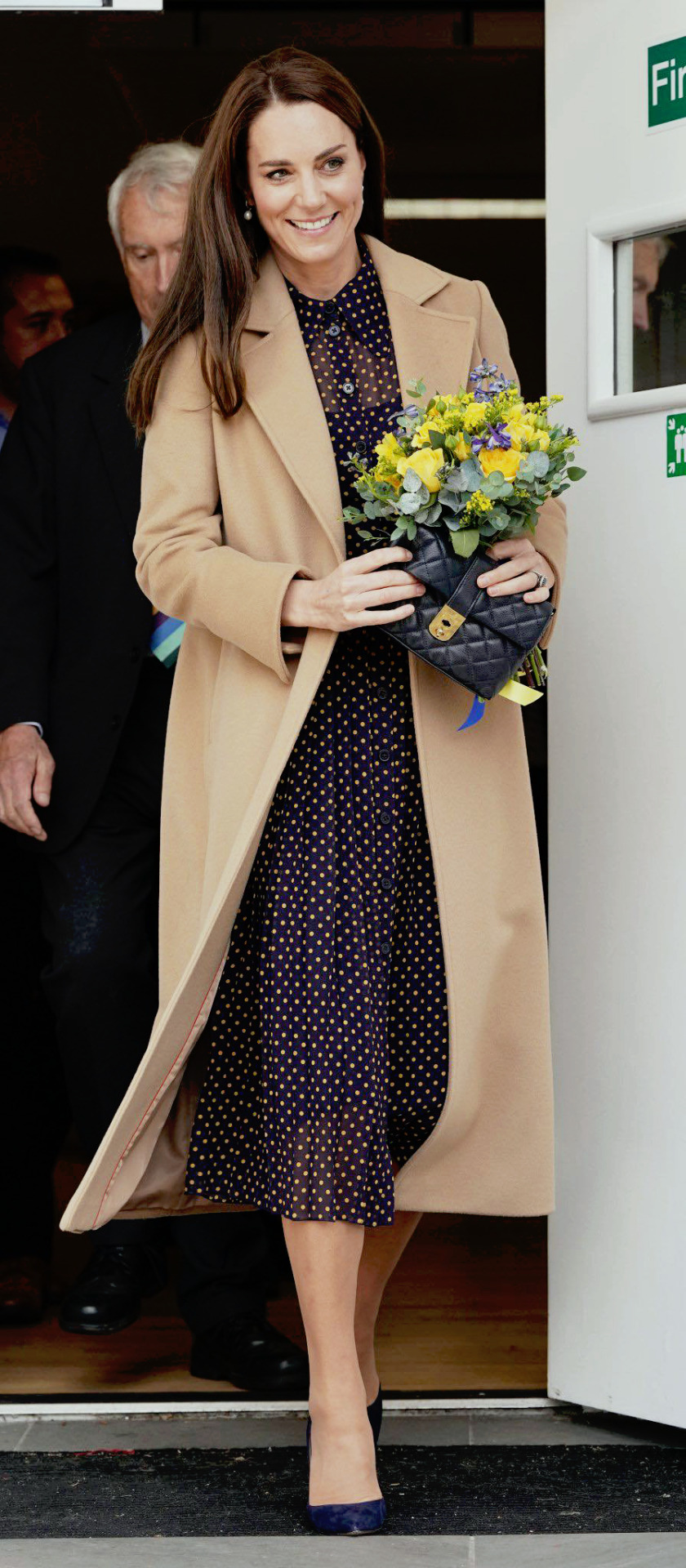
WALK, WALK, FASHION BABY | The Princess of Wales returned to a stalwart classic - flag dressing - alongside a recent addition to her wardrobe for her visit to the Ukrainian Community Centre in Reading. She wore a new LK Bennett dress (which was far more sheer than her usual choices) which was blue and yellow spotted, a touching nod to the colours of the Ukrainian flag. She also rewore the Max and Co camel-coloured wool coat she first wore last week. Catherine also wore her Annoushka pearl drop earrings on her Kiki McDonough gold hoops, and carried her Jaeger quilted clutch - the 'Kate'. Catherine's shoes are likely (although not certainly) to be Rupert Sanderson
56 notes
·
View notes
Text
The Times:
The Princess of Wales’s carol service at Westminster Abbey, which will be broadcast on Christmas Eve, will feature a special performance by a Ukrainian children’s choir from west London.
The princess invited the choir from St Mary’s Ukrainian School after meeting some of them during a visit to the cultural centre earlier this year.
In a letter to the school’s headmistress, Inna Hryhorovych, the princess invited the choir to sing at her service, held for the first time last year. She told her the school was “a lifeline for the whole community” and said: “The children’s choir at St Mary’s is a wonderful example of how it is possible to find pockets of happiness, meaning and comfort during difficult times.” As well as the choir’s performance of Away in a Manger, the service features the Westminster Abbey choir, Craig David, Alexis Ffrench, and a duet by Alfie Boe and Melanie C. Readings are given by the Prince of Wales, Dame Kristin Scott Thomas and Nicola Adams.
The service, which was filmed last week, recognises the efforts of individuals, families and communities across the UK to support those around them.
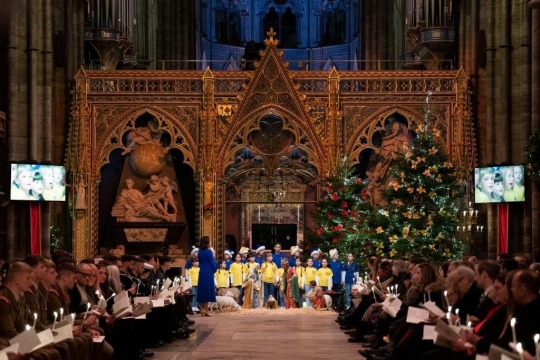
84 notes
·
View notes
Text
At the National Opera of Ukraine in Kyiv recently, I watched a performance of an opera by the Ukrainian composer Mykola Lysenko. The work, charming and comic and an escape from the grimness of Russian missile attacks, is called Natalka Poltavka, based on a play by Ivan Kotliarevsky, who pioneered Ukrainian-language literature in the late-18th and early-19th centuries. Operas by Verdi, Puccini and Mozart, and ballets such as Giselle and La Sylphide, are on the playbill, despite the almost daily air raid sirens. But there is no Eugene Onegin in sight, nor a Queen of Spades, and not a whisper of those Tchaikovsky staples of ballet, Sleeping Beauty or Swan Lake. Russian literature and music, Russian culture of all kinds, is off the menu in wartime Ukraine. It is almost a shock to return to the UK and hear Russian music blithely played on Radio 3.
This absence, some would say erasure, can be hard to comprehend outside Ukraine. When a symphony orchestra in Cardiff removed the 1812 Overture from a programme this spring, there was bafflement verging on an outcry: excising Tchaikovsky was allowing Vladimir Putin and his chums the satisfaction of “owning” Russian culture – it was censorship, it was playing into Russia’s hands. Tchaikovsky himself was not only long dead, but had been an outsider and an internationalist – so the various arguments went. It took some careful explanation to convey that a piece of music glorifying Russian military achievements, and involving actual cannons, might be somewhere beyond poor taste when Russia was at that moment shelling Ukrainian cities – particularly when the families of orchestra members were directly affected.
In fact, such moments have been rare in western Europe. Chekhov and Lermontov continue to be read and Mussorgsky to be performed. Russian culture has not been “cancelled” as Putin claims, and Russian-born musicians and dancers with international careers continue to perform in the west – assuming they have offered a minimum of public deprecation of the killing and destruction being visited on Ukraine. Only the most naive would decry the removal of Valery Gergiev from international concert programmes. The conductor, who is seen as close to Putin, backed the Russian annexation of Crimea in 2014 (unrecognised by most UN countries), has declined to condemn the current full-scale invasion of Ukraine, and has a history of using his artistic profile in the service of the Russian state, such as conducting concerts in Russian-backed South Ossetia in 2008 in the wake of the Russo-Georgian war.
Inside Ukraine, though, things look very different. For many, the current war with Russia is being seen as a “war of decolonisation”, as Ukrainian poet Lyuba Yakimchuk has put it – a moment in which Ukraine has the chance to free itself, at last, from being an object of Russian imperialism. This decolonisation involves a “total rejection of Russian content and Russian culture”, as the writer Oleksandr Mykhed told the Lviv BookForum recently. These are not words that are comfortable to hear – not if, like me, you spent your late teens immersed in Tolstoy’s Anna Karenina and Chekhov stories; not if you have recently rekindled your love of Russian short fiction via George Saunders’ luminous book, A Swim in the Pond in the Rain; not if you adore Stravinsky and would certainly be taking a disc of The Rite of Spring to your desert island.
The context for this rejection has to be understood, though: Ukrainians are emerging from a history in which the Russian empire, and then the Soviet Union, actively and often violently suppressed Ukrainian art. This has worked in a number of different ways. It has included the absorption of numerous Ukrainian artists and writers into the Russian centre (such as Nikolai Gogol, or Mykola Hohol in Ukrainian), and the misclassifying of hundreds of artists as Russian when they could arguably be better described as Ukrainian (such as the painter Kazimir Malevich, who was Kyiv-born but Russian, according to the Tate). It has meant that writing in Ukrainian has at times been proscribed – Ukraine’s national poet, Taras Shevchenko, was banned from writing at all for a decade by Tsar Nicholas I. This silencing has encompassed the extermination of Ukrainian artists, like the killing, under Stalin, of hundreds of writers in 1937, known as “the executed renaissance”. Behind all of this stands horrific events such as the Holodomor, the starvation of about 4.5 million Ukrainians in 1932-33 in their forced effort to produce grain on Stalin’s orders.
This history places Ukraine in a very different position in relation to Russian culture than, say, Britain found itself in relation to German and Austrian art during the second world war, when Myra Hess programmed Mozart, Bach and Beethoven in her National Gallery concerts during the Blitz. “We have had cultural occupation, language occupation, art occupation and occupation with weapons. There’s not much difference between them,” the composer Igor Zavgorodniy tells me. In the Soviet period, Ukrainian culture was allowed to be harmlessly folksy – and Ukrainians, caricatured as drunken yokels dressed in Cossack trousers, were often the butt of belittling jokes. But Ukraine was not expected or allowed to carry a high culture of its own. At the same time, Russian artistic achievement was lauded as the very apex of human greatness. “We were raised in a certain piety towards the Russian literature,” explains the playwright Natalya Vorozhbit, who was educated in the Soviet period. “There wasn’t such piety towards any other literature.”
Putin himself has effectively doubled down on all this through his constant insistence, in his essays and often rambling speeches, that Ukraine has no separate existence from Russia – no identity, no culture at all, except as an adjunct of its neighbour. Indeed, his claim of Russia’s cultural inseparability from Ukraine is one of his key justifications for invasion. At the same time the Russian instrumentalisation of its artistic history is breathtakingly blatant. In occupied Kherson, billboards proclaiming it as a “city with Russian history”, show an image of Pushkin, who visited the city in 1820. Ukrainian artists also object to how, in a more general way, the projection of Russia as a great nation of artistic brilliance operates as a tool of soft power, a kind of ambient hum of positivity that, they would argue, softens the true brutality of today’s invasion. In Ukraine, there is a generalised cry of “bullshit” in relation to the myth of the “Russian soul”.
Some Ukrainians I speak to hope that one day, beyond the end of the war, there will be a way of consuming Russian literature and music – but first the work of decolonisation must be done, including the rereading and rethinking of classic authors, unravelling how they reflected and, at times, projected the values of the Russian empire. In the meantime, “My child will be perfectly all right growing up without Pushkin or Dostoevsky,” says Vorozhbit. “I don’t feel sorry.”
For many Ukrainians I encounter, the time for Russian literature will come again – when it can be critically understood as simply another branch of world culture, and as neither an unduly oppressive, nor overwhelming, force. At the National Opera House, I ask the choreographer Viktor Lytvynov when he thinks Tchaikovsky – a composer he loves – will be back on the programme. “When Russian stops being an aggressor,” he says. “When Russia stops being an evil empire.”
70 notes
·
View notes
Text

Ukrainian flags flutter outside a destroyed cultural center in Derhachi, eastern Ukraine, Sunday, May 15, 2022. A Russian airstrike destroyed the venue on May 12. (AP Photo/Bernat Armangue)

A plastic Kalashnikov rifle to shoot balls at a portrait of Russian President Vladimir Putin, is photographed at a street attraction in the centre of Lviv, Ukraine on Saturday, May 14, 2022. The banner reads in Ukrainian: It's not a shame to miss. It's a shame not to try to shoot! Glory to Ukraine, Death to our enemies!. (AP Photo/Emilio Morenatti)

A cat roams near a gun of a Ukrainian serviceman in a recently retaken village on the outskirts of Kharkiv, east Ukraine, Saturday, May 14, 2022. (AP Photo/Mstyslav Chernov)

Ukrainian serviceman wave a flag with writing reading in Ukrainian "Glory to Ukraine", top, and "Death to the enemies" as they ride atop a tank in the Kharkiv region, eastern Ukraine, Monday, May 16, 2022. (AP Photo/Bernat Armangue)

The helmet of a Russian soldier lays in a trench in the village of Malaya Rohan, Kharkiv region, Ukraine, Monday, May 16, 2022. (AP Photo/Bernat Armangue)
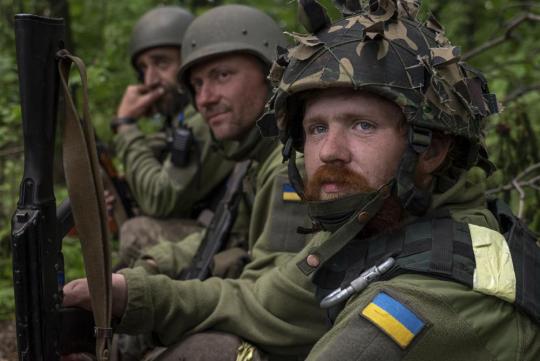
Ukrainian servicemen take rest in a recently retaken village north of Kharkiv, east Ukraine, Sunday, May 15, 2022. (AP Photo/Mstyslav Chernov)

In the Lviv train station’s mother and children room on Sunday, May 15, 2022. Three children slept before heading back home to Kharkiv. “When we were leaving, I was sure — and also was afraid — that we’ll never come back,” said one mother, Kateryna Samoilova, 28. (Diego Ibarra Sanchez/The New York Times)
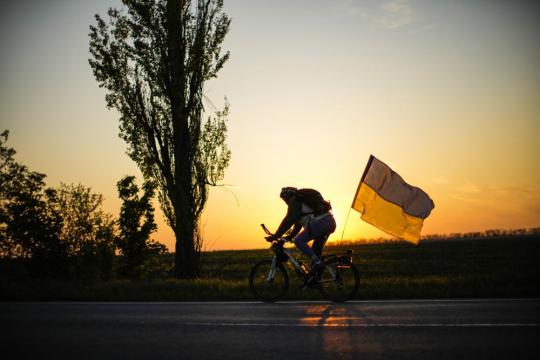
A man rides a bicycle with a Ukrainian flag on the road between Odesa and Mykolaiv, southern Ukraine, Saturday, May 14, 2022. (AP Photo/Francisco Seco)
156 notes
·
View notes
Text
This may be a controversial opinion but I genuinely find that white people can't be trusted to care about anything outside themselves for the most part as a group.
In the last few months looking for a psych placement in mental health + starting work at this new 2-day/week placement in a community health centre, white folks have consistently shown that they just. Don't seem to actively think about people who are not white, both on a systemic and individual scale. Diversity and marginalisation only matter and exist to white people insofar as white people are or can be affected by them, which really isn't any surprise at all when I say this; we know this about white people.
Like the word 'Pride'. 'Pride' is just automatically assumed to be about LGBTQIA+ pride immediately all the time. And yes this is probably in large part because of context in that this isn't the 'US' (it's 'Aus') and there isn't other movements like Black pride or Indigenous pride but like there's never any consideration of other potentialities, it always just automatically means or refers to LGBTQiA+ people. There's a 'Victorian Pride Centre' and the 'Pride' in it refers to LGBTQIA+ pride because it's a LGBTQIA+-friendly space celebrating LGBTQIA+ folks.
Then there was a suggestion of a professional development and training workshop and the top one that was suggested was something called 'Trauma-Informed Diversity Awareness'. To me, 'Diversity' means cultural diversity. But it's also still a vague title in that - what diversity are you talking about? It doesn't specify or say. That's so vague. So I read the blurb and it turns out it's about fucking transgender and gender-diverse people again and it just gets referred to as 'LGBT+' in discussions again. Which isn't wrong, and it is important, but if it's about trans and gender diversity then just fucking say it's TGD awareness, dear g-d.
Then I chat to my supervisor (who is white) about my case load which is all white folks even though some are not Anglo, but I literally have 1 Chinese client out of 6 current interactive clients, and all of them are older women except again for 1 late 20s dude, and he says 'That sounds like a pretty diverse caseload' and I'm like. No????? Actually absolutely not???
And neurodiversity. White folk love talking about neurodiversity. Suddenly now every white person I'm seeing is talking about neurodiversity. When they say they're inclusive, they mean of neurodiversity and LGBTQIA+.
But you never see the word 'diverse' meaning culturally diverse when a white person fucking uses it, it feels like lately, where I am in the mental health sector. It's driving me insane.
Tldr; white folk really fucking forget nonwhite people exist. And you also see it in how absolutely fucking no one has been talking about Gaza in my daily life in the, again, fucking mental health sector. And you see it in how white folk treated the Ukrainian invasion by Russia vs. Gaza and Palestine. And how yesterday the two white women in front of me in the open office cubicles were talking about the fucking Oscars like everyday life really is just going on like nothing is happening.
There is white life, and then there is just 'all other, less relevant life, only relevant insofar as they can be made use of to aid white life'.
4 notes
·
View notes
Text
My own clown mini opinion is that kids living in countries/cultures where there is only one major writing system should be taught a little bit more about how different writing systems work. To be taught about it at all in the first place, actually, in many cases. Even if they don't fully learn the language in school.
One, kids are actually very easily intrigued by this (just spelling their name or some words or doing their own writing is source of entertainment and they will often also show off their own skills), it creates an interest in language learning (or combats fear of it) and:
A lot of framing and othering of other cultures in the West happens through the way people portray every day things from other cultures - languages, religious practices, clothes, cooking - and writing. Very much writing. In an age of written communication, writing is so front and centre in our perception of self and others and the way we engage with other cultures and countries. And framing writing in any certain way throws a very large shadow over any culture that is victim to such a narrative. Children are, at large, still very immune to this for a few years.
But what they are not immune against is learning to think of their own way to write as the 'one, universal, right, 'normal' way' and of everything else as strange and deliberately mysterious. Much like how people growing up around few languages or just one are usually more convinced that someone is 'talking about them' or 'withholding something' if they speak a foreign language.
That's why I think it is important kids are taught about different writing systems co-existing and possessing equal validity and just being a normal, every day thing. That using different characters or letters isn't so different from someone just speaking another language but just part of it.
Think of how in western films and games, Cyrillic and Kanji writing are used as shorthand for 'communism' or 'scary cyberpunk future', presenting other cultures as a threat or a stand-in for a threat.
More harmful, think of stuff like this:

(I'm not saying the bag is harmful! The bag is brilliant! I mean the islamophobic attitude that prompts this fear.)
Think of the clowns on twitter who demanded that Ukrainians should adopt the Latin alphabet to 'distance from Russia' and 'show loyalty to the west' if they wanted support.
Now, in my personal experience, nothing deconstructs this effect faster than actually learning how these letters work. It just deconstructs so much of it because now it's no longer a wall of cryptic that is being vaguely associated with what little a person knows of a vague conglomerate of cultures, but it becomes a writing system. Just that. The kids learn how it works, how parts of it work. Recognising basic words or signs in a language - even if you just see a city-scape and recognise the signs for supermarket or taxi, it takes so much power away from any medium or framing that wants to scare you or present this as some foreign, exotic land that is completely different from your own. Instead, now the kid learns to see an every day scene of people living their lives - now, their eye is guided to the similarities, not the differences.
Even if you cannot read it fluently, recognising an 'a' or an 'l' - it turns a wall of foreign letters from an image into a text.
For example, seeing Korean letters and recognising elements of a character and knowing what sound it signifies or seeing Kanji and recognising radicals or parts of another Kanji that you might know - it completely changes the gaze you have on a foreign language, even if you don't speak it. So yeah, I generally think it's a good idea to show kids these mechanics and challenge their idea of (for many kids in the west) the universality of the Latin alphabet.
#and i also think it doesn't hurt their literacy in their own first language to practice this#for the record i don't think this will Press X To Abolish Racism of anything#i just think it would be helpful
54 notes
·
View notes
Text
Vandalism and Looting: Russia’s War against Ukraine’s Cultural Heritage
During the Russian aggression against Ukraine, not only Ukrainian citizens and infrastructure, but also cultural heritage was targeted by the enemy. Destruction of monuments, strikes on educational and cultural institutions, plundering of museums — this is not a complete list of crimes. Their number and the testimonies of employees of the affected institutions prove that we are not talking about individual cases, but about a systematic and purposeful policy.
Cultural heritage was at gunpoint of the occupiers not by chance, but because of their desire to destroy the Ukrainian identity. The actions of the aggressor can be considered as a component of the crime of genocide against the Ukrainian people.
READ ALSO: “Hopeless Times”: How Empire Prevented us from Being Ukrainians
In the year of the full-scale war, 1,332 objects of cultural infrastructure were damaged: theatres, philharmonics, museums, galleries, libraries, clubs. More than a third of them were destroyed. As of mid-May 2023, the list of destroyed cultural monuments and cultural heritage sites numbered more than 620 objects. Donetsk, Luhansk, Kharkiv, Sumy, Chernihiv, Kyiv, Mykolaiv, Kherson, and Zaporizhzhia oblasts suffered the most. As a result of the blowing-up of the Kakhovka HPP by the Russian invaders, almost one and a half hundred monuments of architecture and archaeology, museums of the South of Ukraine were flooded. The Centre for Strategic Communication and Information Security looks back on the most high-profile and terrible crimes of Russians against Ukrainian culture.
Kherson Oblast: flooded and plundered museums
In Oleshky, water from the blown-up Kakhovka HPP flooded the house of the artist Polina Raiko, a representative of naive art, whose work is put on a par with the art of Kateryna Bilokur and Maria Prymachenko. The water destroyed the inner walls with paintings, damaged the outer walls and the ceiling. According to preliminary estimates, only 30-40% of the frescoes have survived. While Oleshky is under occupation, the destruction of the house will continue. Ukrainian specialists do not have the opportunity to work in Oleshky, and Russians have no intention of saving the monument.
In addition to the Raiko Museum, the house-museum of the writer Ostap Vyshnia, the Korsun monastery of the 18th century, the excavation site of the medieval Tiahyn fortress, and the port city of Oleshia suffered from flooding.
READ ALSO: Who Blew up Kakhovka HPP
During the occupation, the Russians robbed the funds of the Oleksii Shovkunenko Kherson Art Museum, the Kherson Regional Local Lore Museum, and the Albert Havdzynskyi Art Gallery in Nova Kakhovka. Collections of iconography of the 17-20th centuries, Ukrainian painting of the 19-20th centuries, in particular, 297 works of art and graphics by Havdzynskyi, works of modern artists were taken to the occupied Crimea. Some stolen paintings ended up in the exposition of the Central Museum of Tavrida.
The chronology of one of the acts of looting, according to the testimonies of the employees of the Oleksii Shovkunenko Kherson Art Museum: three trucks and a school bus with loot left the territory of the museum in just one day, on November 1, 2022. The next day, two more trucks left. On November 3, leftovers were picked up by bus. According to preliminary estimates, we are talking about 15,000 units of the collection.
From the Kherson Regional Local Lore Museum, the occupiers stole collections of coins, weapons, Sarmatian jewellery from the excavations of the Soviet era and the Russian Empire, antique furniture of the 18th-19th centuries, a collection of icons, paintings, and the whole part of the exposition of archaeology. It was the core of the museum’s collection.
The regional archive and the scientific library named after Oles Honchar also had a sad fate. The occupiers stole archival documents and collections of pre-revolutionary publications.
Zaporizhzhia: plundered Kamiana Mohyla and theft of Scythian gold
At the end of April 2022, the Russian military mined the territory near Kamiana Mohyla — a unique monument of geology and archaeology of global importance, the only place in Eastern Europe where rock art from the Late Palaeolithic to the Middle Ages has been preserved. The monument is located on the territory of the eponymous reserve near Melitopol.
The Russians robbed the reserve and took the artefacts to the occupied Crimea. In January 2023, employees of the Tauric Chersonese Museum, controlled by the invaders, went to Zaporizhzhia Oblast to “study the funds” of the Kamiana Mohyla Reserve.
Around May 20, 2023, the Russian propaganda agency Ria Novosti presented a report on the “new exhibition” in the museum-reserve Tauric Chersonese, where the artefacts of the historical and archaeological reserve Kamiana Mohyla, stolen and taken to Sevastopol, were displayed. In particular, the tooth of a mammoth of the late Palaeolithic era, sandstone with imprints of algae, a copper figure made by the Huns, as well as petroglyphs with hunting scenes, household items, ceramics, tools of the Stone Age. According to preliminary unverified information, 120 museum objects were stolen from the territory of Kamiana Mohyla.
From the local history museum in Melitopol, the Russians stole a collection of Scythian, Hun, and Sarmatian gold, silver coins from the Doukhobor treasure and historical weapons. The museum staff tried to save the artefacts. However, the local collaborator, who was appointed “director” of the institution, reported about the treasures to the occupiers. The fate of the exhibits is currently unknown.
It’s not only washing machines.
🇷🇺 soldiers also snatched artifacts from almost 40🇺🇦 museums.
On this photo is a golden diadem of the Huns, a piece of a historical jewellery set from 90 items the ruscists stole from a Melitopol museum.
Once a war criminal, always a war criminal pic.twitter.com/GhIVRai2Hf
— Defense of Ukraine (@DefenceU) October 9, 2022
Kharkiv Oblast: destroyed museum of Hryhorii Skovoroda
On the night of May 7, Russian artillery struck the museum in the village of Skovorodynivka in the Zolochiv hromada of Kharkiv Oblast. The house of Andrii Kovalivskyi, where the philosopher was staying, was seriously affected by the fire. The destroyed building is not only a museum, but also a monument of architecture of the 18th century.
With a strike on Skovorodynivka, Russians “congratulated” Ukrainians on the 300-th birthday of the philosopher in their manner. It was this museum, on the territory of which the grave of Skovoroda with the legendary inscription “The world tried to catch me but could not” is located, that was given a central role in the celebration of the anniversary. But because of the Russian invasion, the activities had to be significantly adjusted.
The enemy failed to destroy everything. According to the Minister of Culture, Oleksandr Tkachenko, the most valuable exhibits were not damaged: they had been taken to a safer place in advance.
The miraculous surviving of the monument to the philosopher became a real symbol of the invincibility of Ukrainians. It was one of the central exhibits of the World of Skovoroda exhibition, dedicated to the 300th anniversary of the Ukrainian genius, held at the Ukrainian House in Kyiv.
Kyiv Oblast: Maria Prymachenko Museum
During the offensive of the Russians on Kyiv in February, a museum in Ivankiv was under the fire of enemy artillery, where more than two dozen works of the world-famous artist, representative of naive art, Maria Prymachenko, were kept. A part of the collection was already in Kyiv, a part was saved from the burning museum by locals.
Mariupol: an airstrike on the theatre and a robbed cathedral
During the defence of Mariupol, which lasted almost three months, the besieged city suffered some of the greatest destruction in Ukraine. Russian invaders methodically destroyed objects of life support, housing stock, social and cultural infrastructure.
The building of the Donetsk Drama Theatre, destroyed by an air strike, next to which a huge inscription “Children” was made in Russian, became one of the symbols of Russian war crimes. Children with their parents were hiding in the basement of the theatre, most of whom died.
In May, the Russians dismantled the rubble and buried hundreds of people (the exact number of victims has not been established) in unnamed graves in Manhush.
According to the legitimate local authorities, the Russian invaders completely removed all valuable exhibits from the Mariupol Museum of Local Lore and the Kuindzhi Art Museum. The originals of paintings by Arkhip Kuindzhi and Ivan Aivazovskyi were stolen.
Later, during the hostilities in Mariupol, a museum of local history, an art museum, and an exhibition hall named after Arkhip Kuindzhi were destroyed.
The surviving exhibits, although the “rebuilding of Mariupol” became one of the key topics of Russian propaganda, were transported to the occupied Donetsk. Their further fate, in particular, of the paintings by Ivan Aivazovsky, Tetiana Yablonska, Mykola Derehus, is unknown.
The Cathedral of St. Petro Mohyla of the Orthodox Church of Ukraine was robbed by Russian occupiers, and a collection of Ukrainian books was seized and burned in the courtyard of the church. The library contained several unique copies of Ukrainian-language editions, which are now lost forever.
The Church of St. Peter Mohyla and the Church of the Assumption of Mary of the Orthodox Church of Ukraine in Mariupol, painted with traditional Ukrainian paintings. This is the world’s first church of this size (the total area of the painting is 500 linear meters), painted in the style of “Petrykivka.” The church is listed in the Book of Records of Ukraine.
Chernihiv: Tarnovskyi Museum of Antiquities
In March 2022, Russian soldiers targeted the house of Vasyl Tarnovskyi in Chernihiv — a monument of architecture of the 19th century. This historic building housed the Museum of Ukrainian Antiquities, founded in 1896, later the Chernihiv Historical Museum, and since 1980 — a library for young people. The building and the collection of the historical museum were also affected by Russian shelling.
Donetsk Oblast: wooden skete of the Sviatohirsk Lavra
The All Saints Skete of the Sviatohirsk Lavra burned down as a result of Russian shelling during an enemy offensive in Donetsk Oblast. The All Saints Skete was built in 1912. This is one of the best examples of preserving wooden church architecture. The church was first destroyed by the Bolsheviks in 1947, and was restored in the early 2000s. It was considered a monument of wooden architecture and was the largest wooden church in Ukraine.
Sumy Oblast: Leopold Koenig Manor
Retreating in April 2022 from Sumy Oblast, the Russians destroyed a monument of architecture of national importance — the house of the estate manager of Koenig in Trostianets. The garden housed a local history museum, a picture gallery, and a chocolate museum. The main house and the most famous part of the garden — the Round Yard — suffered less. The occupiers destroyed a unique library, which numbered more than 15,000 books.
Kharkiv: historical buildings in the city centre
On March 1, during the battle for Kharkiv, the Russians fired two Kalibr missiles at the building of the regional state administration and the regional council on the Svoboda Maidan. 29 people died as a result of the attack.
In two weeks, a missile attack destroyed a neighbouring residential building — a local architectural monument.
The Palace of Labour (the former profitable house of the insurance company “Russia”), one of the architectural sights of Kharkiv, was struck by a hostile missile on March 2. The roof collapsed, the windows were shattered, the walls were damaged. During the shelling, the facades of the city council building and the 18th-century Dormition Cathedral, located nearby, were also damaged.
On March 29, an enemy missile hit an ancient fire station on the Poltava Way. It was built in 1887 and the fire tower — 40 years earlier. It was the tallest building in Kharkiv for a long time, and until recently, towered over the low-rise development of Zalopan.
The highest number of destroyed architectural monuments in Kharkiv is in the central part of the city.
In total, Russian occupiers destroyed and damaged more than a hundred architectural monuments in Kharkiv and the oblast.
Zhytomyr region: Church of the Nativity of the Blessed Virgin Mary
This is another architectural monument of national importance destroyed by the Russian occupiers. Built in 1862, the wooden church survived two world wars, but was destroyed by the fire of Russian artillery in early March 2022.
Crimea: damaged Khan’s Palace and destroyed archaeological monuments
The history of Russian crimes against cultural heritage in Ukraine began long before February 24, 2022. The occupation of the Autonomous Republic of Crimea and the city of Sevastopol in 2014 had fatal consequences for the monuments of the peninsula.
The construction of the Tavrida highway connecting Kerch, Simferopol, and Sevastopol in 2017-2020 was accompanied by the destruction of archaeological sites. At least 90 of them were destroyed. Due to the emergency mode of work, even the norms of the Russian memorial protection legislation were ignored, and archaeologists did not have enough time to account the finds. The settlements of the Bronze Age, Scythian burial mounds, and hillforts suffered because of the construction equipment.
In 2016, the occupiers began the notorious “restoration” of the Khan’s Palace in Bakhchysarai, which became a real act of vandalism and mistreatment of the dignity and national memory of the Crimean Tatars. The dismantling of the roof and the ensemble of coloured stained-glass windows of the Golden Cabinet, the replacement of the old roof with modern building materials is an undisguised attempt to destroy history and replace it with a new building of dubious quality. It seems that the palace of Giray irritates the Russians. After all, its very existence destroys the myth of the “eternally Russian Crimea” and is a silent reminder of the times when Moscow tsars paid tribute to Crimean khans.
***
Russian aggression has shown that the Kremlin is trying to destroy not only Ukrainian statehood, but also Ukrainian identity. The war against cultural heritage is part of this programme. The Russians practise the tactics of the scorched earth, not considering the victims and destruction, as well as carry out terrorist attacks on civilian objects. Among them, especially in the first months of the invasion, there were many cultural monuments. War causes enormous damage to archaeological heritage: entire cultural layers can be destroyed during hostilities.
Russians treat the cultural heritage of Ukraine as invaders and colonizers. Destroying what they cannot use in their interests, in particular, to promote their vision of history and the myth of “great Russian culture.”
For Ukrainian monuments, they have a limited list of scenarios:
clearing the cultural field to replace it with their own, and to claim that there was “nothing” before Russia / without Russia;
the appropriation of someone else’s cultural heritage to then impersonate it as their own. To this end, the occupiers loot Ukrainian museums and take away valuables;
appropriation of material values for the purpose of enrichment.
Such practices for the Russian state are a tradition that is not one hundred years old. The lion’s share of expositions of Russian central museums falls on archaeological finds from Ukraine, samples of Ukrainian iconography, secular painting, and other monuments of Ukrainian culture, with the Cossack hetmans’ regalia inclusive. All this is presented as examples of “Russian” art.
READ ALSO: The Stolen History. 12 Archaeological Treasures that Russia Took out of Ukraine
Ukraine has every right to raise the issue of compensation for the damage caused in the field of culture applying both general and special provisions of international law: UNESCO conventions, UN General Assembly resolutions, the 1970 Convention on the Means of Prohibiting and Preventing the Illicit Import, Export and Transfer of Ownership of Cultural Property, the 1972 Convention Concerning the Protection of the World Cultural and Natural Heritage, etc. The key instrument of reparation is restitution — the return of stolen values and restoration of the integral cultural heritage of the state by replacing the values with similar ones.
It is the reparations that one state pays to another state and the restitution of stolen values that remain the basic requirement for any aggressor.
International experts unanimously admit that this is the largest theft of art objects of the period after the World War II. Synchronization of all major registers of crimes against Ukrainian culture is quite timely. According to preliminary estimates of the Ministry of Culture and Information Policy of Ukraine, the looting and destruction of cultural objects caused losses amounting to hundreds of millions of euros.The Ministry of Culture and Information Policy documents crimes in order to further work in the legal field and bring Russia to justice. It also created a platform for raising funds for the restoration of cultural monuments that suffered from Russian aggression.
Centre for Strategic Communication and Information Security
The post Vandalism and Looting: Russia’s War against Ukraine’s Cultural Heritage appeared first on Centre for strategic communication.
2 notes
·
View notes
Note
I wonder, what he's going to do in Germany? Is it possible that Germany gives more weapons as a gift? Is that the reasons why he travels? Or are there Ukrainian soldiers in Berlin he wants to visit?
Since Steinmeier invited him, I guess he while for sure meet Steinmeier (maybe even an official welcome at Belvedere). I assume he will also meet with Scholz and gouvernment. Maybe with the party leaders. If the Bundestag does a special session (since it's a Saturday), maybe even giving a speech infront of the Bundestag. Also negotiations for weapons and money; getting Germany's support for EU and NATO. (And flattering Scholz and his ego.)
I can also see him traveling to Ramstein or some German military base where Ukrainian soldiers are trained (not sure if there are currently some in training or not).
And I assume he will travel to Aachen to attend the awarding of the Charlemagne Prize (which he and the Ukrainian people won this year). I read somewhere that they changed the award day specifially for him in hopes of him attending it and that Scholz or Steinmeier are in talks for going to do the laudatio.
I think, it also might a possibility that Olena would accompany him to Berlin. To give it an even more official look (Scholz and Steinmeier need that extra belly rub). Also, Olena worked on some projects with Steinmeier's wife, so she can use that opportunity to check her projects and how they're doing. Also visiting the refugees in Berlin is possible. And / or meeting with Makeiev (Ukraine's ambassador in Germany) and visit with him the recently opened Ukraine centre and Ukraine cultural centre. And, as far as I remember, there was also something about Olena organizing the treatment of Ukrainian soldiers and Ukrainians in Germany. So she might visit them (or Ze visits the soldiers). And accompany Ze to the award ceremony. (The Charlemagne Prize is actually pretty big and important.)
2 notes
·
View notes
Text
one year of full-scale war
is today. for the last year I (and many many other ukrainians, no doubt) have been through a lot of states. half year ago I was really afraid that i will be mobilized and sent to front, since than Ive been trying to embrace this possibility, as I am already have served in 2016-2017 so its is not a surprise.
after a year i mostly feel nothing, winter was the hardest. every day had the same atmosphere of dread. in 2022 I mentally prepared myself that i might not be alive next day. than - that I may die before 2023, than - before spring and so and so. now the spring may come, war is still going and will go on, we know that. there is no quick solution although we fight like no one would believe. at this point I am glad the spring is right behind the corner but also - I accepted that I still may die somewhere on the dusty field of my country - somewhere in central or south Ukraine, which is actually the place of birth of both of my parents, their families. I am the child of the same place which is a battlefield right now, that burning land in the centre of europe and the literal central of this conflict. I am still afraid, not gonna lie.
and fear is the only thing that I want to to defeat right now. I know I am not a soldier - no one is. I know I can do something what i must and can, and save some life just by destroying as many of those, who want to take this life. it is that simple. and its is not fair for anyone to turn his/her life to this. and yet it is happening. and I accept it, and I can not accept living in fear my whole life.
I truly love these people and this land, this concept of a country, built by runaway serfs, this rebel state, I lived through Maidan and I live through 9 years of war (1 year of full scale). I love this birth place of many cultures, religions, ethnicities, communities.
I consider myself leftist. I am glad I have been raised the way I am, I am glad I got into punk/hardcore scene in 16 years, it opened the world to me and gave me tools for alternative worldview. I know that I am pansexual from the age of 10-12 (I didnt knew the term obviously, but I never had problem with recognizing it). But I was afraid of showing that. I am 30 right now and until last week I have never been on a date with a man. And now I have, and its wonderful and new and I am regretting all those years I have been hiding some parts of my personality.
there is so much geopolitics and dirt and speculation and propaganda around this war, and the hardest for me is the leftist ignorance, the squeal of old school communists and sovietphiles under the boot of modern russia and its 'soviet anti-imperialistic' legacy. and if I live after all this and some westerner will start preaching me on those - the less I may do is spit in their faces. I do not care for someone educated opinions on this war - I live in it, I know the history of my family and the history of this land. I know what I stand for.
this blog was never really personal, but is so humane to want to be remembered I guess. I want this post to be about me as one the millions ukrainians in this war. So bellow is my photo from this autumn, during one of 680+ air raids in Kyiv
death to all empires
death to russian federation
glory to Ukraine and fallen ukrainian soldiers and people
__________________________________________________________
donate to this fund and help us deal with it, read the webpage for details, you can donate only to humanitarian causes, but, honestly, we need aid to fight, there is no shame in killing russian fascists
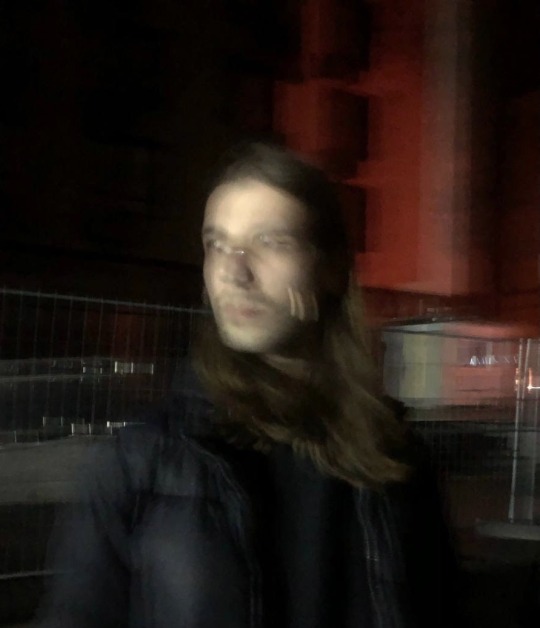
#war in ukraine#russia is a terrorist state#death to russian federation#death to russia#ukraine#ukrainian resistance
4 notes
·
View notes
Text
Russian Military ‘Scrambling' For Manpower As Ukraine’s Path to Victory Laid Bare — PART 2
EXPRESS | By Charlie Bradley | 8/31/2022
[Continued from PART1] » » » Various experts have given their view on what Russia is trying to accomplish at this point in the war. Speaking to the Moscow Times this week, independent military analyst Pavel Luzin said Russian command is “experimenting due to issues [on the battlefield] and are trying not to lose this war,”
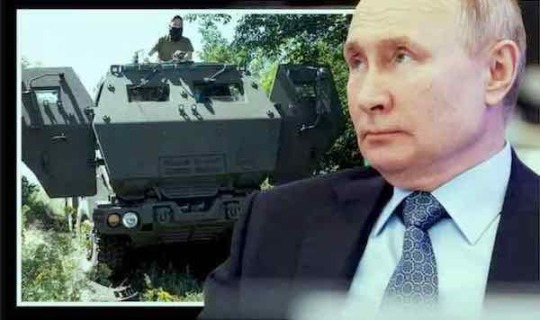
It comes as General Alexander Dvornikov, who was reportedly previously in charge of the Russian offensive, has not been seen in public for weeks. Meanwhile, Russian Deputy Defence Minister Gennady Zhidko appeared alongside Defense Minister Sergei Shoigu on a visit to eastern Ukraine last weekend. Some experts believe this indicates a shake-up in Moscow to try and turn the tide of the conflict. Military analyst Rob Lee tweeted: “It appears to confirm that Colonel-General Gennady Zhidko is the commander of Russian forces in Ukraine."
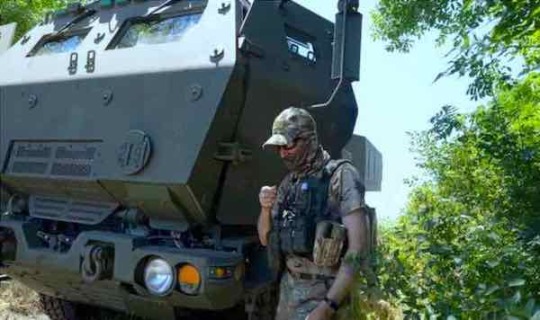
A US think tanks, the Institute for the Study of War, added: “Drastic rotations within the Russian military, if true, are not actions taken by a force on the verge of a major success." Shoigu's visit to Ukraine was his first since the war began. Russian state TV boasted that Shoigu would be making future visits to major cities including Kyiv, Odesa and Mykolaiv once they had been seized.

He handed out medals for heroism and told troops: “I am confident in you. You have many more glorious deeds ahead of you for the benefit of our fatherland, the armed forces and the airborne troops. Congratulations. Take care of yourselves." Ukraine's Centre for Strategic Communications and Information Security, which sits under the country's Ministry of Culture recently claimed that Russia has lost 35,000 lives in the conflict.

Russia has only given an official toll of troops killed on two occasions, the last on March 25, with a figure of 1,351. However, experts have said this figure is way too low an estimate.
▶️ Read the latest Ukraine News with videos on EXPRESS
2 notes
·
View notes
Text

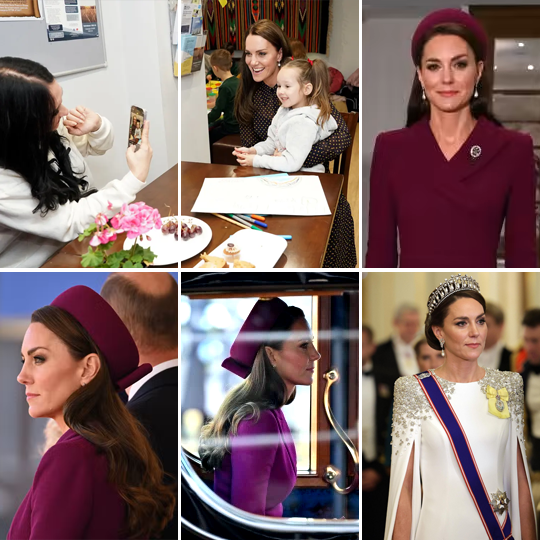

The Princess of Wales' Year in Review: November
November 1st - The Princess of Wales, Patron of the Royal Foundation of The Prince and Princess of Wales, received Amanda Berry at Windsor Castle. She then held a telephone meeting with the Dean of Westminster (David Hoyle). Finally, she held an Early Years Meeting in her role as Patron
November 3rd - The Prince and Princess of Wales visited Scarborough. First, they visited The Street, where they met the Two Ridings Community Foundation youth grant panel, as well as beneficiaries of the funding generated to support local young people's mental health, in their joint role as Patrons of the Royal Foundation of The Prince and Princess of Wales. Later, they visited the Rainbow Centre
November 5th - The Princess of Wales attended the Rugby League World Cup 2021 Match between England and Papua New Guinea, in her role as Patron of the Rugby Football League. She also met with the Women's and Wheelchair teams
November 9th - The Princess of Wales, Patron of the Maternal Mental Health Alliance, visited Colham Manor Children's Centre
November 12th - The Prince and Princess of Wales joined other members of the royal family for the Royal British Legion Festival of Remembrance at the Royal Albert Hall
November 13th - The Prince and Princess of Wales joined other members of the royal family at the Cenotaph on the occasion of Remembrance Day
November 15th - The Prince and Princess of Wales joined other members of the royal family at a reception at Windsor Castle, hosted by the King, following the Platinum Jubilee
November 16th - The Princess of Wales, Patron of the Royal Foundation of The Prince and Princess of Wales, held an Early Years Meeting
November 17th - The Princess of Wales visited Reading Ukrainian Community Centre. Later, the Prince and Princess of Wales, joint Patrons of the Royal Foundation of The Prince and Princess of Wales, attended a reception at Coutts and Company
November 22nd - The President of the Republic of South Africa began a State Visit to The King and Queen of the United Kingdom and Commonwealth Realms. The Prince and Princess of Wales welcomed The President on behalf of The King at the Corinthia Hotel. They then travelled by car to Horse Guards, where they were met by The King and Queen, before travelling in a carriage procession to Buckingham Palace. There, The President, along with members of the Royal Family, viewed a number of items from the Royal Collection which showcased the relationship between the UK and South Africa. Finally, the Prince and Princess of Wales attended a State Banquet given in honour of The President of the Republic of South Africa
November 30th - The Prince and Princess of Wales departed from Heathrow Airport, and were received upon arrival in the United States of America by the Governor of the Commonwealth of Massachusetts at Boston International Airport. They then called upon the Mayor of Boston, Michelle Wu, at Boston City Hall, before attending a 'Welcome to Earthshot' event at Boston City Hall. Finally, the Prince and Princess of Wales attended a National Basketball Association match between the Boston Celtics and Miami Heat
#mine#royaltyedit#kate#yearreview#amanda berry 22 3#david hoyle 22#ey meeting 22 9#scarborough22#the street#the rainbow centre#engpng22#colham manor#festival of remembrance 22#rd 22#platinum jubilee reception#ey meeting 22 10#coutts and company 22#ukrainian cultural centre: reading#sa state visit 22: hotel#sa state visit 22: carriage#sa state visit 22: banquet#boston22
51 notes
·
View notes
Text
Russia claims destroyed Ukraine's 'last warship'
AFP, Wednesday 31 May 2023
Russia on Wednesday claimed it had destroyed the last major warship of the Ukrainian naval forces, which it said was stationed in the southern port of Odesa.
Russian President Vladimir Putin tours the exhibition Development of the Creative Economy in Russia at the Zotov Cultural and Educational Centre in Moscow on May 30, 2023. The word on the background reads Soul .…
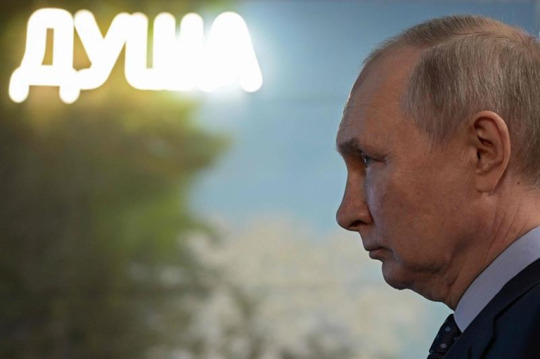
View On WordPress
0 notes
Text
Just in: Russia launches drone attack on Ukraine

Russia launched a drone attack on Ukraine’s southern port city of Odesa early Wednesday but there were no immediate reports of casualties, authorities said.
“At night, the enemy carried out an attack by UAVs of the Shahed-136 type on the Odesa region,” Yuriy Kruk, head of the Odesa district military administration, said in a statement on Telegram.
Kruk said Ukraine’s air defences had destroyed most of the attacking drones but some civilian infrastructure was hit.
“According to preliminary information, there were no casualties. Measures are being taken to contain the fire, units of the State Emergency Service and other structures are working on the spot.”
The Shahed-136 is a small Iranian-made, self-detonating drone that can be programmed to fly automatically to a set of GPS coordinates with a payload of explosives.
Russia’s drone industry has been hit by international sanctions and a number have been shot down since the start of the war — prompting Moscow to import drones from Iran.
The Black Sea port of Odesa was a favourite holiday destination for many Ukrainians and Russians before President Vladimir Putin sent troops into Ukraine in February last year.
Since the start of the invasion, Odesa has been bombed several times by Russian forces. It was also hit by a drone attack two weeks ago that caused some damage.
In January, the United Nations cultural agency UNESCO designated the historic centre of Odesa a World Heritage in Danger site.
Read the full article
0 notes
Text
Straight from the lab
Winter Wave: A Reflective and Purifying Moment
This years “Winter Wave” has made for a quiet time of reflection and purification. A fair amount of that time spent was on which way to orient my practice. What came out of the brainstorming were three key ideas. First, to focus on creating art that centres around a specific tool or motion of art making. Second, an idea born directly out of the pace of current events is more focused projects on a longer timescale. Third, sharing process and inspiration to aid in reducing the ideas to the simplest form. Writing down an introduction or analysis brings clarification and retention of my works. Sharing as a process of learning. My intention is to share the lessons I have learned in the hopes that it will inspire others. For now I have a list of some things to share I have enjoyed recently while building and exploring.
What I am Reading about
"Pre-writing in Southeastern Europe: The Sign System of the Vinca Culture ca 4000 BC" Vinca script sometimes known as the Danube script from the Danube region of Southeastern Europe, dating to as early as 8,000 years, and consisting of a somewhat larger system of about 200 symbol types.
Study I am Reading
ORIGINS OF WRITING: MAGIC OR ACCOUNTANCY?
Christopher Josiffe 2011
Lecture I am watching
Trypillia Chalcolithic megasites
The Trypillia megasites of the Ukrainian forest steppe formed the largest fourth- millennium BC sites in Eurasia and possibly the world.
youtube
Currently pondering
Testament of Garab Dorje
Upon his death, Garab Dorje imparted his last testament to Manjushrimitra. These three precepts, known as the “Three Words that Strike to the Heart of the Essential Point” summarize the whole of the Dzogchen teachings:
One is introduced directly to one’s true nature
One attains certainty about this natural state
One continues with confidence in liberation
1 note
·
View note
Text
It fr pains me how fucking arrogant, selfish, and uneducated some of ya'll Americans are about the crisis in Ukraine.
There has already been "fake news claims", isolationist mentality, and some wierd ass shit like "Ukrainian lives don't matter until black lives do" or "if ur an empath ur allowed to ignore literal war crimes". Tf? Ur American? Unless u literally survived a war/extreme trauma, fucking just read the news. Ur just feeling uncomfortable about ur own privilege.
Full offense, shut the fuck up. People are dying and they have been for years.
I'll break down why all members of western countries should care (from an ex-history major):



In WW1/WW2, America's stance on those wars initially was isolationist.
WW1 was basically a royal incest cousin squabble and WW2 was literal war crimes.
Right before Hitler, Stalin starved Ukrainians. This genocide is called "Holodomor". Some historians believe it was unintentional, but others believe it was.
Hitler rose to power from 1933-1939, slowly amassing an army and building weaponry. This was illegal as per the Treaty of Versailles (June 28 1919) the main treaty signed at the Paris Peace Conference.
He annexed several nations (once again, illegal) and the west sat idly by. They didn't act until Poland was invaded.
Of course, some historians argue that the west did not want to see another war because of the horrors of trench warfare during WW1 (watch the 1930s film version of "All Quiet on the Western Front") and the Great Depression was fucking ass.
Understandable, but still wtf. Also, the Great Depression was actually 100% American rich ppls fault.
America had introduced the credit system, which allowed farmers to borrow money to purchase farm goods. Great and all, until insider trading happens, all the money dissapears from the banks, no money can be borrowed, fucking up the economy resulting in "Black Friday" aka the stock market crash of Nov 1929.
This was really bad, cuz if the American economy was fucked up, so was the Europeans. America was lending money to Germany to pay for reperations to the European nations as per the Treaty of Versailles.
That meant that Germany now could not pay its debts. This was detrimental as countries like France were very much relying on that stream of money as they suffered immense physical damage to their nation.
This lead to the Great Depression, affecting almost every country in the world, as everyone relied on either Europe of America for goods/services/ect.
Obviously antisemitism, Hitler was fucked up, ect were the main reason for WW2, but one can imagine how differently WW2 would have played out in an economically peaceful time.
Fast forward to the Cold War. Russia vs USA. Nuclear war was imminent. Satellite states. The Red Scare. McCarthyism.
Ukraine was a satellite state/a founding nation of the USSR for 70+ years (1922-1991)
This meant Ukraine was stripped of its autonomy and basic human rights for almost 100 years.
Ukraine gained it's independence after the 90s, but was under constant threat of interference.
In 2013, the ruling leader at the time (friends w/ Putin) made laws that were unconstitutional. This lead to a peaceful student protest which ended in a bloody massacre by the absolutely immoral and cruel special police; Berkut. ("Winter on Fire" is a moving docu about this event) The protest was later called Euromaidan or the Revolution of Dignity.
Then in 2014 Crimea was annexed by Russia. Literal months after war crimes against Ukrainian people's was enacted.
Basically what I'm saying is, humans are fucked up, especially those in power. It's our responsibility to back up those nations in need and stop centering those not affected.
Donate to your local Ukranian cultural center, aid centres, Ukrainian non profits. Protest in front of Russian embassies, write to your local representative, talk to your friends, families, and neighbours. This is what is civilians can do to make out voices heard to this in power.
Don't think that just cuz ur one person, you have no real voice. Ur human. Ur valued. We matter. We must fight together for our brothers and sisters, siblings, cousins, families across borders. I'm not Ukrainian but it doesn't matter. Every human has intrinsic value and you'd better be sure I'll fight tooth and nail for our people's.
Don't sit idly by while democracies and civil liberties are being stripped away. If this does not persuade you, how about the thought that your country is suffering economically and may suffer more directly if Putin is not dealt with?
8 notes
·
View notes
Text
Dear Tumblr users,
As I sit at home, a small town in the West of the country, all I feel is a sense of uselessness. I wish there was something I could do to stop this. I wish our collective frustration could blow up the enemy. I wish someone could snap their fingers and we all would wake up from this terrifying dream. But all us civilians can do is help each other and wait for the new information to drop. And playing this so-called “waiting game” is fucking heartbreaking and emotionally draining.
All I personally can do at 2 a.m. on a Saturday is spread awareness about how it actually feels to be in this situation. And if I’m honest, I wish no one ever has to deal with something so horrifying and devastating. I can’t bear to watch our children, adults, families die or lose their homes anymore. We don’t deserve this, no one does.
My friends and family in the military are doing everything they can to protect our land. Our citizens are spending their days and nights at volunteer centres helping those who fled their cities because of attacks. We are one hell of a strong nation. And we will do anything to protect that.
I had an opportunity to flee one of the biggest cities early on. Despite leaving most of my belongings, I managed to grab everything I needed, including my pet (PLEASE do not abandon your animals). And now, as I sit and read the news, all I wish for is our army’s safety, for them to return to their families as soon as possible. Our boys and girls are the most amazing army in the world and they’ll always fight for what they believe in - for the future of Ukraine.
Despite having their own losses, the enemy doesn’t want to stop this madness. That bald ass son of a bitch hiding in his bunker will pay for this. He’ll pay for our people, and for his too. Every mother who lost her son is going to curse him, I know ours already did. The world-known shame he brought on the future generations of Russians will never be erased, and that I can guarantee. There is a special place in hell reserved for him and his supporters. They won’t get away with taking our brothers and sisters away, we won’t let them.
I was born in the independent Ukraine. I know my country. I know its boarders, its culture, its people, its national language - they all shaped who I am today. And I will fight for that. I am Ukrainian. No invader will ever make me kneel and give in to their rule. I am free and so are all citizens of Ukraine. And we will stand by our nation no matter what.
Dear Hitler’s reincarnation, we don’t need your “saving” or “freeing” us. The only thing we need is for you and your brainwashed herd to get the fuck out of our land. You were never welcome here and from now on never will be. I hope you and your gang of sheep bull will rot as our country flourishes.
And as for foreigners who are trying to help in different ways - we see you and we appreciate you. Despite the evident ignorance from the international governments, we see your support and couldn’t be more thankful. Thank you from the bottom of my heart for donating, speaking out and praying for our country. We are grateful.
The majority of us are safe. But far from okay. We believe in our army and victory will be ours.
Слава Україні!
16 notes
·
View notes